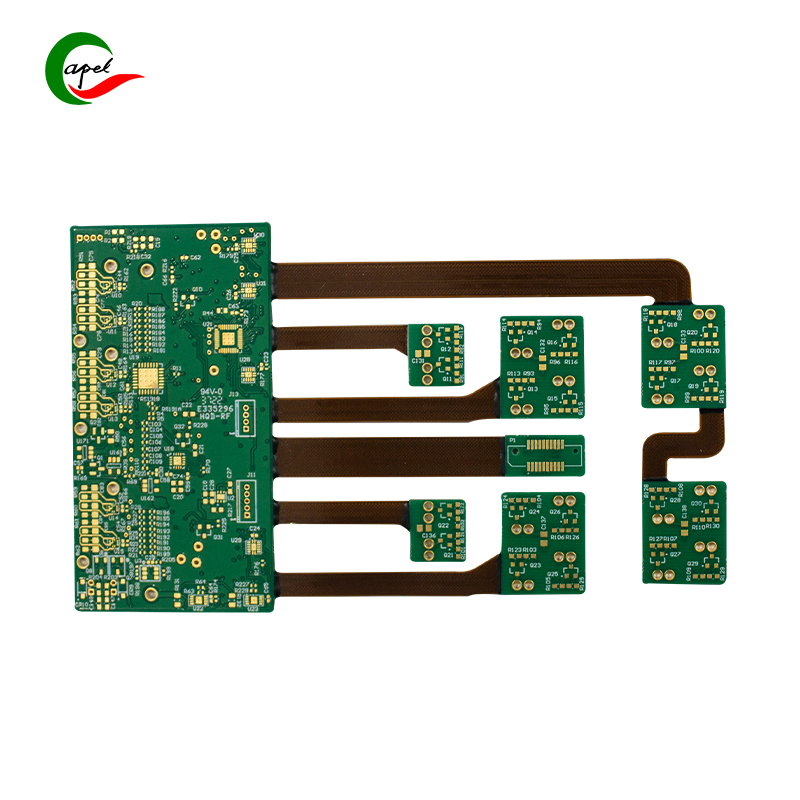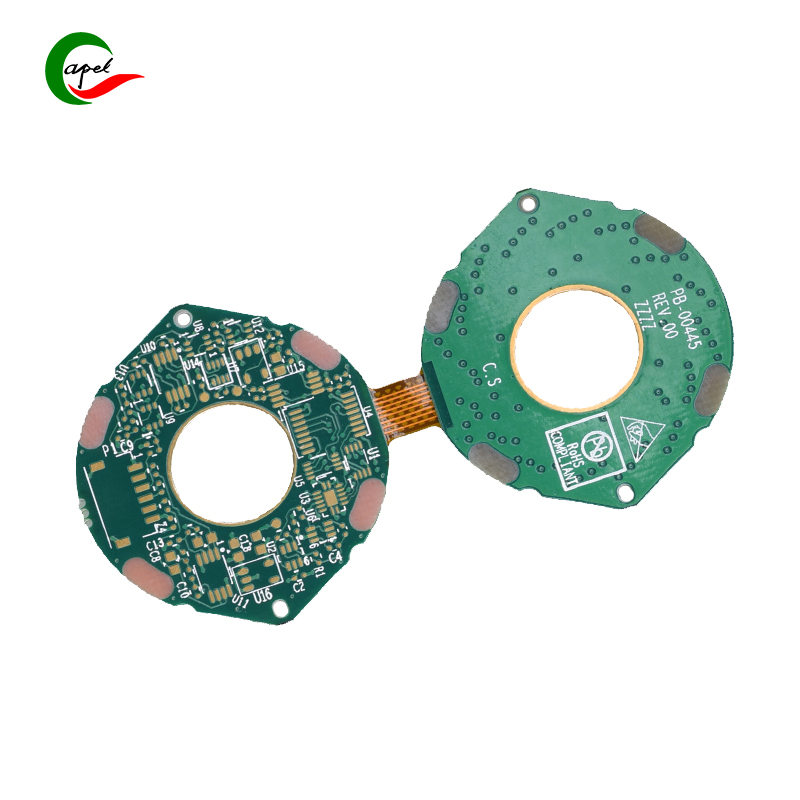Capel explores the advantage of Rigid Flex Pcb for you.
Welcome to our blog highlighting the incredible benefits of rigid-flex PCBs and their role in enhancing the overall functionality and performance of the electronics industry. As a leader in the PCB market, Capel takes great pride in having three state-of-the-art factories that meet the ever-changing needs of customers around the world. With over 1500 dedicated professionals, including 200 highly skilled engineers and researchers, who collectively have over 15 years of experience, we are firmly established as an industry leader. In this blog, we’ll delve into the salient features of rigid-flex PCBs, revealing the true power of integration and how it contributes to the advancement of modern technology.
The Development Trend of Rigid Flex Circuit Board
In today’s rapidly evolving technological environment, electronic devices are becoming increasingly compact and complex. To meet the demands of miniaturization while ensuring optimal functionality, engineers and designers are turning to rigid-flex PCBs. These innovative boards combine the advantages of rigid and flex circuits to provide a comprehensive solution that maximizes integration performance.
What is Rigid-Flex PCB Integration
Integrated performance refers to the ability of a system to seamlessly combine multiple components and functions into a single device. Rigid-flex PCBs excel in this regard because they can integrate both rigid and flexible areas within the same board. This flexibility makes efficient use of available space, enabling the creation of smaller, more versatile devices. By combining rigid and flexible sections, engineers can achieve complex folding and bending configurations, ultimately enhancing product functionality.
Unlocking the Potential of Rigid-Flex PCBs: Enhancing System Performance Through Component Integration
With their impressive design and construction, rigid-flex boards have become the solution of choice for businesses aiming to optimize the functionality of electronic devices. The unique combination of rigidity and flexibility allows for seamless integration of various components for improved performance and reliability. Through a meticulous manufacturing process, rigid-flex PCBs enable seamless connection of rigid and flex circuits without the need for additional connectors, cables, or bulky mechanical parts. By doing so, this innovative solution not only maximizes space utilization within the device, but also minimizes the risk of failure due to loose connections or wiring problems.
Simplified integration: Eliminate extra connectors and wires with rigid-flex PCB for efficient design
One of the main advantages of using a rigid-flex PCB is to reduce overall weight and size. Traditional PCBs require additional connectors, wires and interconnects, which take up valuable space and add weight to the final product. Rigid-flex printed circuit boards eliminate the need for such components, allowing for a simplified design that maximizes integration performance. Whether it’s a medical device, an automotive module, or a consumer electronics product, reducing size and weight is critical to improving portability, ease of use, and overall user experience.
From Motion to Vibration: Unveiling the Superior Performance of Rigid-Flex PCBs in Dynamic Devices
In addition, rigid-flex PCBs have higher reliability and durability than traditional circuit boards. Rigid-flex PCBs excel at ensuring long-term functionality in devices that experience continuous motion, vibration, and bending. Their ability to withstand repeated bending and folding without compromising electrical performance or structural integrity is unmatched. This durability is especially important in applications such as wearable technology, aerospace and military equipment, where reliability is critical even in challenging environments.
Time to Market: How Rigid-Flex PCBs Drive Competitive Pricing and Faster Product Releases
Additionally, by incorporating rigid-flex PCBs into product designs, manufacturers can significantly reduce assembly time and costs. Rigid-flex PCB simplifies the assembly process compared to the complex process of integrating multiple rigid boards with connectors and wires. Fewer components and interconnects mean less manual labor, minimizing the potential for errors and defects in production. As a result, this increases overall manufacturing efficiency and reduces costs, enabling more competitive pricing and faster time to market.
Lightweight, compact and advanced: Exploring the possibilities of rigid-flex PCBs in cutting-edge device designs
A significant advantage of rigid-flex is also reflected in its ability to withstand challenging operating conditions. Whether it’s temperature extremes, vibration, shock, or constant bending and flexing, these PCBs offer unmatched durability and longevity. This makes them ideal for applications requiring high resistance to environmental elements, such as the aerospace, automotive and medical industries. Additionally, rigid-flex PCBs offer exceptional design flexibility, enabling manufacturers to create complex, compact and lightweight devices that were once unimaginable. This in turn opens up a world of possibilities for product designers and engineers to push the boundaries of creativity, resulting in cutting-edge technological advancements.
Improving Integration Performance: How Experienced PCB Fabricators Can Maximize Rigid-Flex Benefits
In order to take full advantage of the advantages of rigid-flex boards, it is essential to work with a reliable and experienced PCB manufacturer. Companies with high-quality rigid-flex PCB production expertise can help designers optimize the integration performance of their products, providing tailor-made solutions to meet specific design requirements. By utilizing the latest manufacturing techniques and materials, these manufacturers can deliver cutting-edge PCBs that facilitate innovation and the development of advanced electronic devices.
In conclusion, rigid-flex PCBs provide an excellent solution for seamless integration of electronic devices. By combining the advantages of rigid and flex circuits, these PCBs enable efficient space utilization, reduced weight and size, increased durability, and simplified assembly. Rigid-flex PCBs are able to meet the demands of modern technology and will surely revolutionize the electronics industry and facilitate the development of more compact, multifunctional and functional devices.
Quality Assurance: How Capel ensures superior performance and reliability of rigid-flex PCBs
At Capel, we understand the importance of integration for optimal functionality. Rigid-flex printed circuit boards enable seamless integration of multiple functions without the need for additional components, reducing the overall weight of the device, improving reliability, and simplifying the manufacturing process. This integration also helps reduce signal interference and promotes efficient cooling, which can help improve system performance. Additionally, since no connectors or cables are required, rigid-flex PCBs significantly enhance the overall aesthetics of the device and increase its resistance to moisture, dust, and other contaminants. With a strong quality control system, Capel ensures that each rigid-flex board meets the highest industry standards, providing our customers with top-notch products in terms of performance and reliability.
In summary, the advantages of rigid-flex combined with integrated performance and enhanced functionality have fundamentally changed the electronics industry. These PCBs have the unique ability to seamlessly integrate rigid and flex circuits.These PCBs have the unique ability to seamlessly integrate rigid and flexible circuits, facilitating the development of more durable, compact and high-performance electronic devices. With its extensive experience and expertise, Capel is proud to meet the growing demand for rigid-flex PCBs, ensuring our customers have access to cutting-edge technology that meets their specific requirements. Trust Capel for all your rigid-flex PCB needs and experience the true power of modern electronics integration.
Post time: Aug-14-2023
Back








